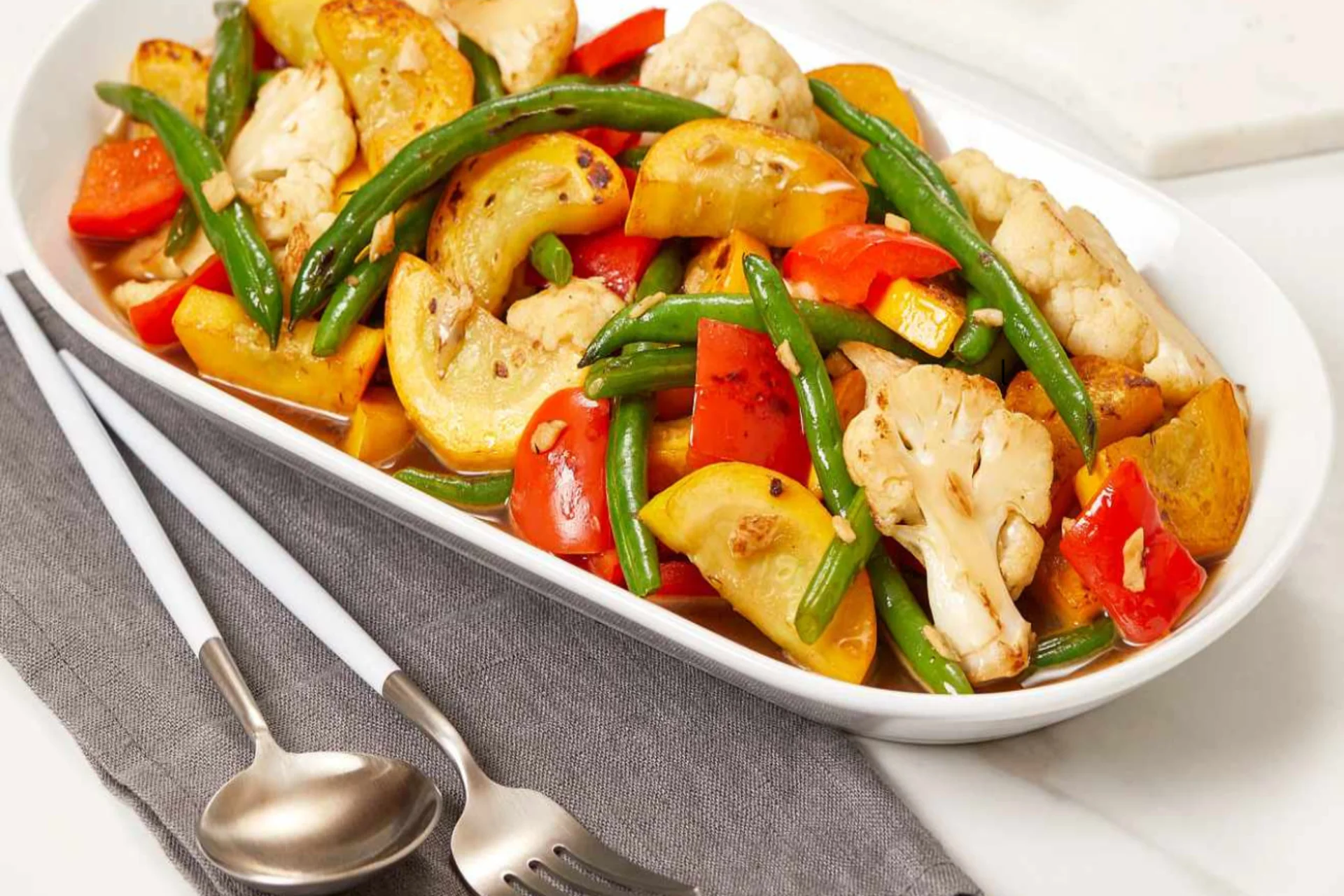Now that we have talked about easy side dishes, looking at a quick vegetable sauté is important. Extremely rich in nutrients, taste, and color, this dish is perfect for those days when you don’t have much time to cook. Besides serving it with a protein of your choice, over pasta, or even having it on its own, this sauté is easy to personalize and appropriate for any time of the day. Also, it can come in handy in using the leftovers of veggies in your kitchen!
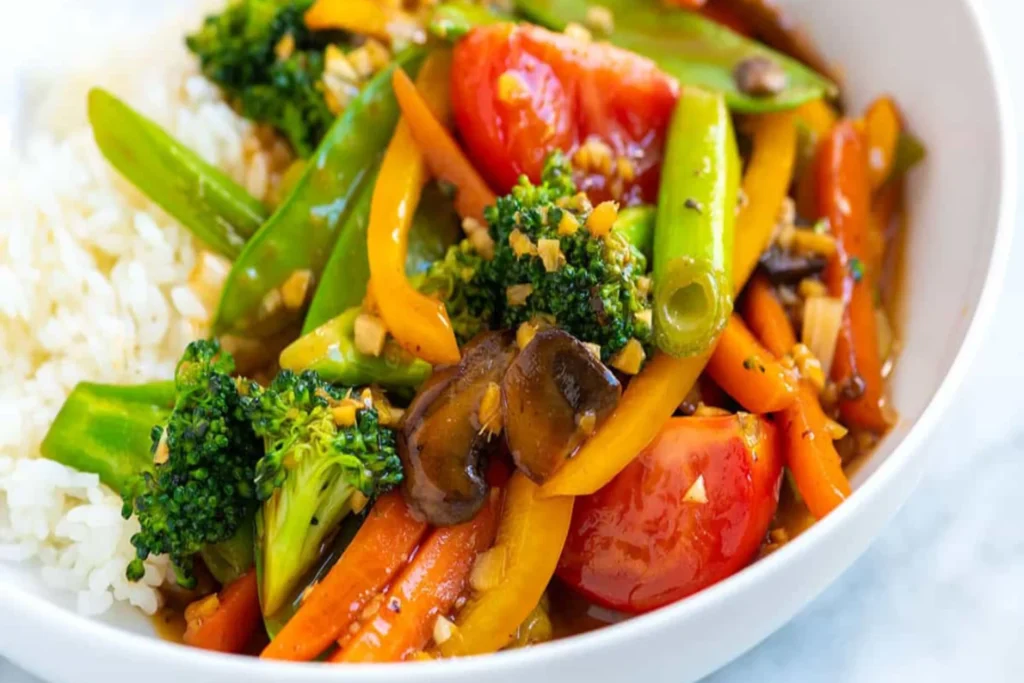
Table of Contents
Why Make a Quick Vegetable Sauté?
Sure enough, a vegetable sauté is not a complex meal, but it is also healthy. Here are a few reasons why you might want to add this recipe to your weekly rotation:
Fast and Easy: It only takes 15 minutes to make, so it’s perfect for whenever you’re pressed for time during the week.
Nutritious: Rich and filled with vitamins A, B, C, potassium, iron, and unique antioxidants from the vegetables it contains.
Versatile: The flavors adjust based on the vegetable used; feel free to use any vegetables of your preference or that are available to you.
Budget-Friendly: A great way to fully optimize the use of food items that you have purchased without a single item going to waste.
Customizable: You can modify the seasonings used, oils, and vegetables according to your personal preference or by lactose intolerance.
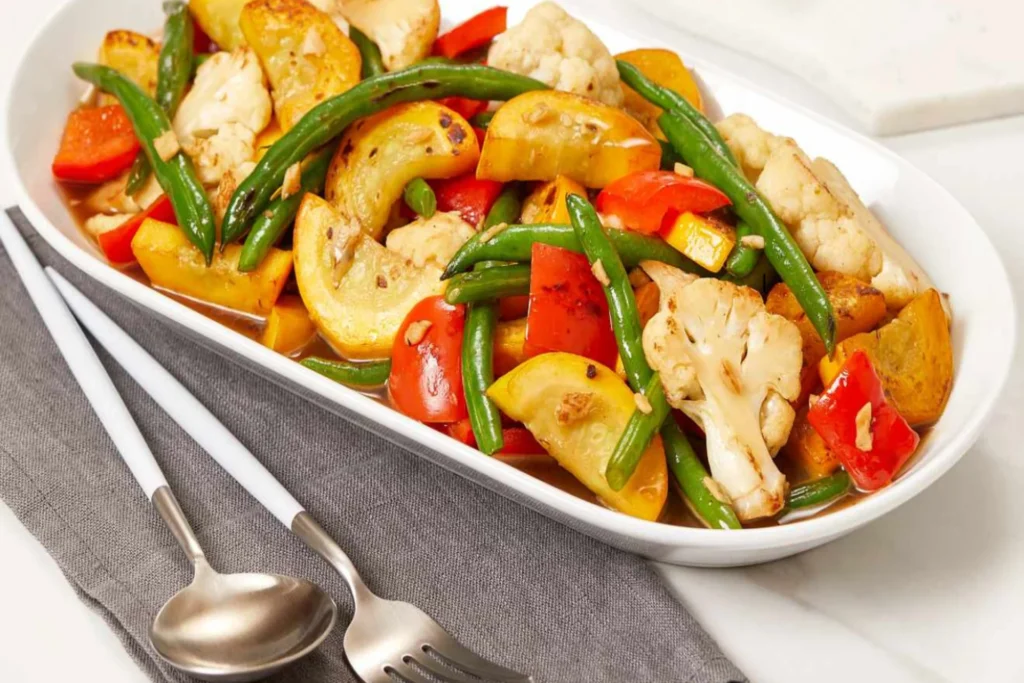
Ingredients for Vegetable Sauté
Here’s your basic list of ingredients that you can come across at any supermarket or local store. These vegetables complement each other well in terms of flavor, texture, and color:
Mixed Vegetables:
Vegetables (red, yellow, and green bell peppers) – 1 cup, chopped
Zucchini – 1 cup, sliced
Mushrooms – 1 cup, sliced
Carrot – 1, julienned
Broccoli florets – 1 cup
Garlic: 2-3 cloves, minced
Olive Oil: 2 tablespoons of oil (or whatever type of oil that you wish to use).
Salt and Pepper: To taste
Seasonings:
Italian herbs or dried basil – 1 teaspoon
Red chili flakes – to be added, as per one’s taste.
Lemon Juice: 1 tablespoon if you want your soda to have a fresh flavor finish.
Fresh Herbs: Chopped parsley or basil (ranch as garnish)
Step-by-Step Recipe for Perfect Vegetable Sauté
Tired of the usual routine? Follow these steps, to quickly cook vegetable sauté that is easy to prepare and tasty.
Step 1: Prep Your Veggies
Dice all the vegetables to about the same size as peas. However, the sizes must be quite close to each other so that all the pieces are heat-processed evenly. Minced garlic should be kept apart.
Step 2: Heat the Pan
Heat a large skillet or wok at medium-high and add the olive oil. Let the oil become hot but do not let it to smoke.
Step 3: Sauté Garlic
After that, add the minced garlic into hot oil and stir until it becomes aromatic for about ½ minute. This will marginalize the garlic flavor into the oil ready to support your veggies to cook in.
Step 4: Add Harder Vegetables
When layered initially choose vegetables that require more time to be cooked, such as carrots and broccoli. Turn all the ingredients over and cook for about 2- 3 minutes, stirring occasionally.
Step 5: Add Remaining Vegetables
Then, add the bell peppers, zucchini, and mushrooms. It continues to cook while turning the pieces to make sure they are all coated with the garlic oil.
Step 6: Season and Sauté
In it add black pepper, salt, and any Italian herbs of your choice, and red chili flakes if you love it spicy to taste. Mix well to include the seasonings evenly, finally put the vegetables back to the heat for another 5-7 minutes or until they are still lightly done.
Step 7: Finish with Lemon Juice and Fresh Herbs
After sautéing your vegetables pour a little fresh lemon juice over them to enhance the flavor, garnish with chopped parsley or basil. …meat okay with, enjoy warm to the buds!
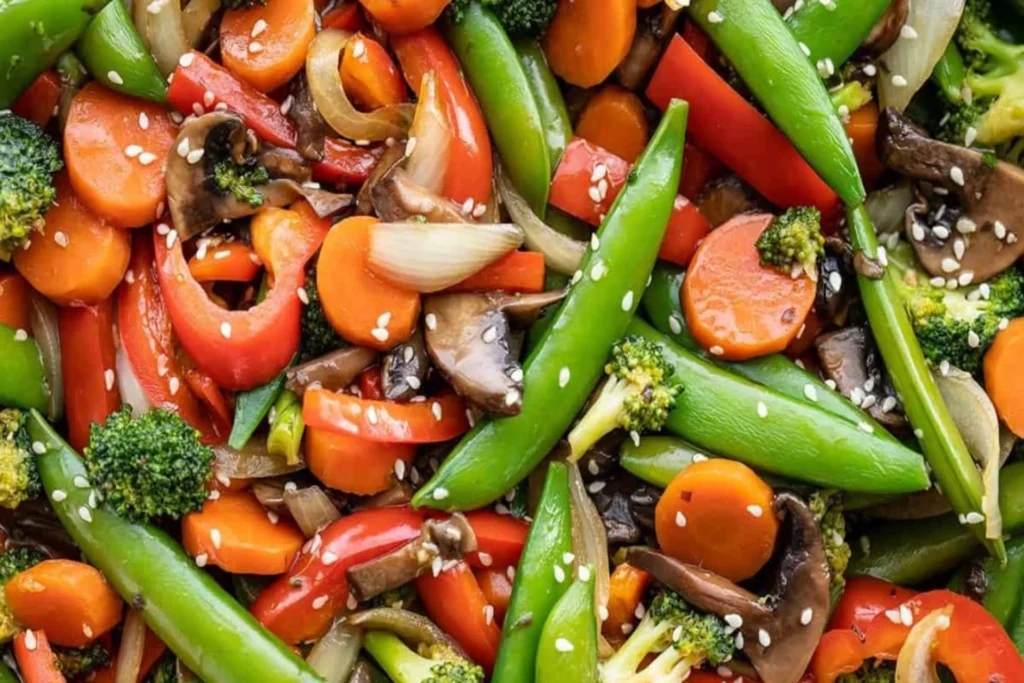
Tips for Customizing Your Vegetable Sauté
There are so many ways in which this dish can be modified. Here are a few ideas for making it your own:
Add Protein: For a more filling meal add cooked chicken, shrimp, or tofu to your stir fry.
Switch Up the Vegetables: Make use of whatever is available in the certain season, or whichever ingredients you have available. Seventeen suggests including green beans, cherry tomatoes, spinach, or eggplant.
Experiment with Flavors: For a more Asian feel to the dish you could replace the Worchestershire sauce with soy sauce, or even add a little bit of balsamic vinegar.
Spice it Up: If you prefer something spicy, you may increase the amount of jalapeno pepper or a teaspoon of cayenne pepper.
Nutrition and Health Benefits
A quick vegetable sauté not only tastes amazing but is also packed with health benefits:
Fiber: Negative effect or how it works in helping with digestion and giving the feeling of a full stomach.
Vitamins and Minerals: This dish contains vitamins C and A among others and minerals like potassium and magnesium.
Antioxidants: The various-colored vegetables used in the preparation of this dish contain antioxidants that may help to fight diseases.
Low Calorie and Low Carb: Not a speck of sugar or processed component is included in this dish which makes it a very low caloric meal ideal for those on diets.
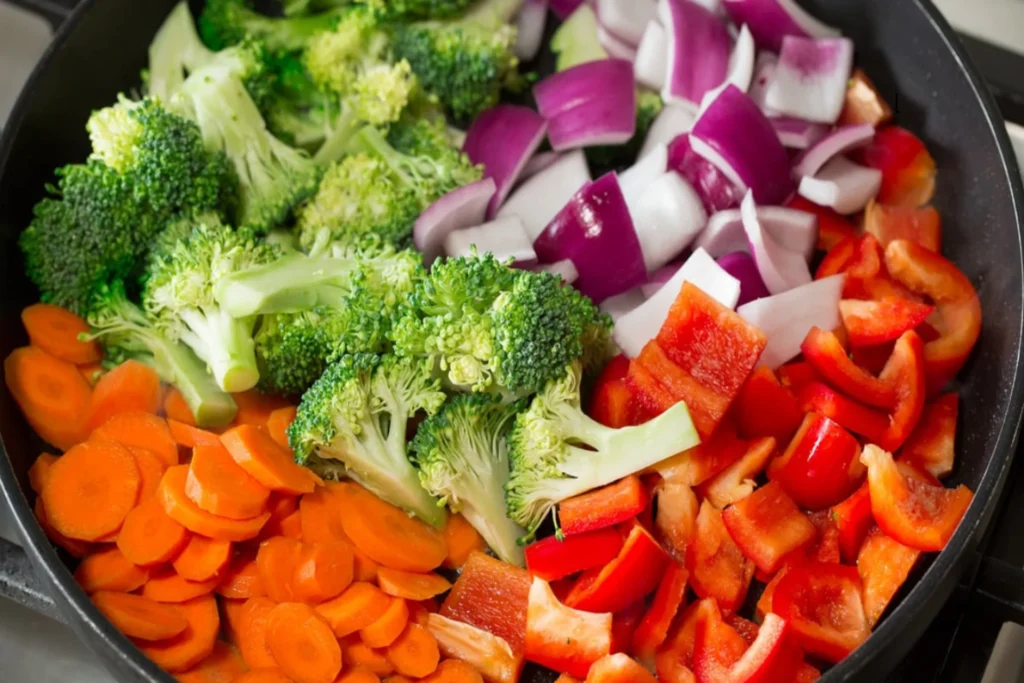
FAQs
Can I make this vegetable sauté ahead of time?
Yes, you can! Although it’s best served fresh, you can store leftovers in the refrigerator for up to three days. Reheat on the stovetop or in the microwave.
What are the best vegetables to use in a sauté?
The best vegetables are those that cook relatively quickly, such as bell peppers, zucchini, mushrooms, and broccoli. Feel free to experiment with your favorites!
Can I use frozen vegetables?
Absolutely! Just keep in mind that frozen vegetables may release more water during cooking. Sauté until the liquid evaporates for the best texture.
Is this dish vegan?
Yes, this recipe is entirely plant-based. If you prefer a bit of butter for richness, you can add a pat of vegan butter.
What’s the best oil for sautéing vegetables?
Olive oil is a great option for its flavor, but you can also use avocado oil, coconut oil, or even ghee. Just avoid oils with low smoke points.
